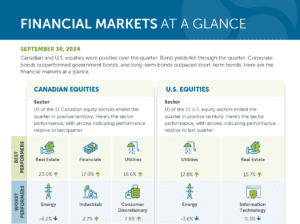How a Buffer Fund of Funds Can Help Advisors Manage Risk

What You Need to Know
Buffer ETFs are liquid, transparent and customizable to risk tolerance, and have lower fees than index annuities and structured products do.
On top of diversification and tax efficiency, buffer FOFs aim to take the reallocation burden off advisors’ shoulders.
A FOF approach lets advisors lean on an investment professional, enabling them to spend more time on other objectives and client-related issues.
Among many other market participants and experts, former Federal Reserve Bank of New York President Bill Dudley warned that stock and bond investors should batten down the hatches as steps are taken to get inflation under control.
Market drops could become more pronounced, and advisors should understand all the risk-mitigation investments available to them. Since that warning in early April, we have seen markets continue to struggle, with the S&P 500 and Nasdaq Composite down -19.6% and -27.8% respectively year to date.
Buffer funds, which include exchange-traded funds, mutual funds and unit investment trusts, have emerged as standout options for advisors and investors looking to manage market volatility. Over the past few months, buffer ETFs have become particularly prominent with advisors. These funds are liquid, transparent, customizable based on investor risk tolerance, and have lower fees than index annuities and structured products do.
There are drawbacks, however, associated with buffer ETFs — primarily monitoring where the ETFs trade in relation to their upside caps and the associated capital gains taxes that come with selling an individual buffer ETF before the end of its outcome period. Given the nature of these investment vehicles, each buffered ETF has a cap that limits the upside over a specified outcome period.
Advisors seeking to maximize returns while minimizing risk may decide to sell individual buffer ETFs when they’re trading near their upside cap before the end of the outcome period. This process is time-consuming and can generate capital gains taxes, which eat into returns that are capped. But actively managed fund-of-fund (FOF) buffer products can help address these shortcomings head-on while offering advisors added benefits.
Introducing Actively Managed Buffer Fund of Fund ETFs
FOFs might not be a new concept to those in the mutual fund and hedge fund industries. To those who are unfamiliar, this investment strategy means exactly what it implies. In the context of this article, it is one ETF product that spreads out assets across a series of buffer ETFs. Buffer FOFs aim to offer more diversity, tax efficiency and ease of use, while hopefully reducing the advisor time commitment required to invest in these innovative strategies.
Cap ‘Diversity’ in One ETF Wrapper
A FOF provides exposure to numerous buffer ETF products in one ETF wrapper. This approach offers advisors an opportunity to selectively own a diversified basket of individual buffer ETFs that have attractive risk-reward profiles in the current market environment.
Individual buffer ETFs will often go through periods of time when the product is trading near its upside cap prior to the end of the outcome period. This presents the advisor with the difficult decision of whether they should sell the individual ETF to lock in gains or hold on until the end of the outcome period.
Using a FOF approach, advisors aren’t limited to one particular buffered note and don’t have to settle for an ETF that could be pressing up against its cap, inhibiting potential gains. A FOF offers advisors access to a basket of buffered notes with various caps that could potentially position a portfolio to achieve gains it otherwise would’ve missed out on, especially because these are actively managed by the fund sub-advisor to help with the rollover of funds.
By analyzing where each buffer ETF is trading relative to its upside cap and the broader market, there are periods of time where certain buffered ETF series might offer better risk-reward profiles than others. The FOF is able to analyze where each individual buffered ETF is trading relative to its cap and outcome period and opportunistically weight the portfolio by allocating to individual buffered notes that currently have the most attractive risk-reward profiles.




